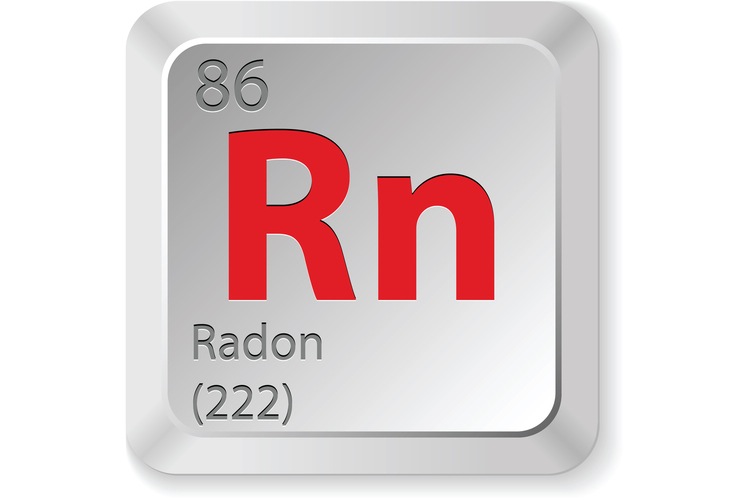
Radon is a naturally-occurring radioactive gas that can cause lung cancer. Radon gas is inert, colorless and odorless. Radon is naturally in the atmosphere in trace amounts. Outdoors, radon disperses rapidly and, generally, is not a health issue. Most radon exposure occurs inside homes, schools and workplaces. Radon gas becomes trapped indoors after it enters buildings through cracks and other holes in the foundation. Indoor radon can be controlled and managed with proven, cost-effective techniques.
Breathing radon over time increases your risk of lung cancer. Radon is the second leading cause of lung cancer in the United States. Nationally, the EPA estimates that about 21,000 people die each year from radon-related lung cancer. Only smoking causes more lung cancer deaths.
You can take steps to reduce and control the amount of radon in your home. Testing is the only way to determine radon levels. Have your home tested, either by a professional or with a do-it-yourself home test kit. If radon levels are high, contact a certified radon service professional to fix your home. EPA guidance suggests mitigating if levels are at or above 148 Becquerels/meter3 (4 picocuries/liter). Usually, radon problems are fixed using an underground ventilation system or by increasing the rate of air changes in the building.
What is background radiation? Is background radiation a risk to me and my family?
Natural background radiation is all around us. Background radiation varies from place to place and over time, depending on the amount of naturally-occurring radioactive elements in soil, water and air. Weather conditions also affect radiation levels, as snow cover may shield these elements, and radioactive particulates can wash out of the air during rain storms. Cosmic radiation from the sun, our galaxy, and beyond is constantly around us and contributes to natural background radiation. Altitude and latitude can also influence the level of background radiation at any one site.
All rocks and soils contain some trace amount of natural radioactivity and can sometimes be ingested or inhaled if disturbed. Radon is a gas that can concentrate indoors and be inhaled, along with its decay products. We can also ingest radioactivity from the food we eat and the water we drink.
A number of factors determine the annual dose you and your family receive from background radiation. The following chart shows the percentage of background radiation dose received annually from various natural sources.
Testing & mitigating your home for radon

3 BEST Radon Test Kit For Home Epa Approves as of March 2023
Discovery of Radon
Radon gas was discovered in 1900 by Fredrich E. Dorn in Halle, Germany. He described it as radium emanation because it arose from the element radium, which he was working with.
In 1908 William Ramsay and Robert Gray isolated the gas and named it niton.
Since 1923, it has been called radon (after radium, one of its sources).
Radon was one of the earliest discovered radioactive elements, identified after uranium, thorium, polonium and radium.
Harmful effects:
Radon is highly radioactive and a carcinogen. Its decay products are toxic and radioactive. Radon is present in most homes and is the number one cause of lung-cancer in non-smokers in the USA. (See video on left.)
Characteristics:
Radon is one of the noble gases; hence it is a chemically inert, monatomic gas.
It is also radioactive, colorless and odorless.
Radon is produced naturally by the decay of uranium’s decay products, such as 226Ra.


 Trump administration offers to pay plane tickets, give stipend to self-deporting immigrants
Trump administration offers to pay plane tickets, give stipend to self-deporting immigrants  The Force Awakens: Aiden Anderson’s Rise in Dallas Amateur Boxing
The Force Awakens: Aiden Anderson’s Rise in Dallas Amateur Boxing  Tesla’s Cybertruck Will Rapidly Depreciate From Now On
Tesla’s Cybertruck Will Rapidly Depreciate From Now On  Was it really about the Lil Wayne Concert
Was it really about the Lil Wayne Concert  Black Chicago Activists Blast Mayor Brandon Johnson for “Replacing” Them With Migrants
Black Chicago Activists Blast Mayor Brandon Johnson for “Replacing” Them With Migrants  Migrants desperately digging through trash bins for food as they live out of buses in Chicago
Migrants desperately digging through trash bins for food as they live out of buses in Chicago  Sofia Llamas: A Force for Good in Colorado – Igniting Hope and Empowering Communities
Sofia Llamas: A Force for Good in Colorado – Igniting Hope and Empowering Communities  Thomas Edward Patrick Brady Jr, Shedeur Sanders, Travis Hunter, Shilo Sanders, Jimmy Horn Jr, Global Don, and more
Thomas Edward Patrick Brady Jr, Shedeur Sanders, Travis Hunter, Shilo Sanders, Jimmy Horn Jr, Global Don, and more